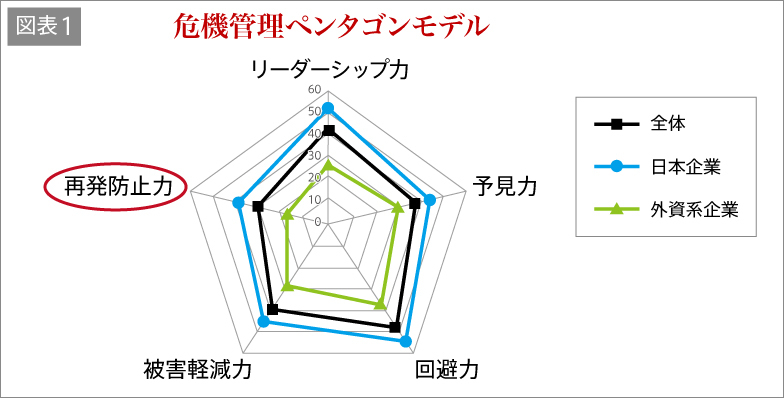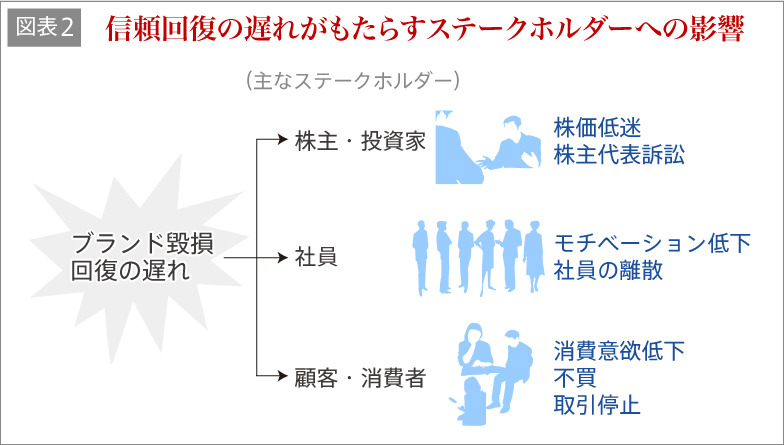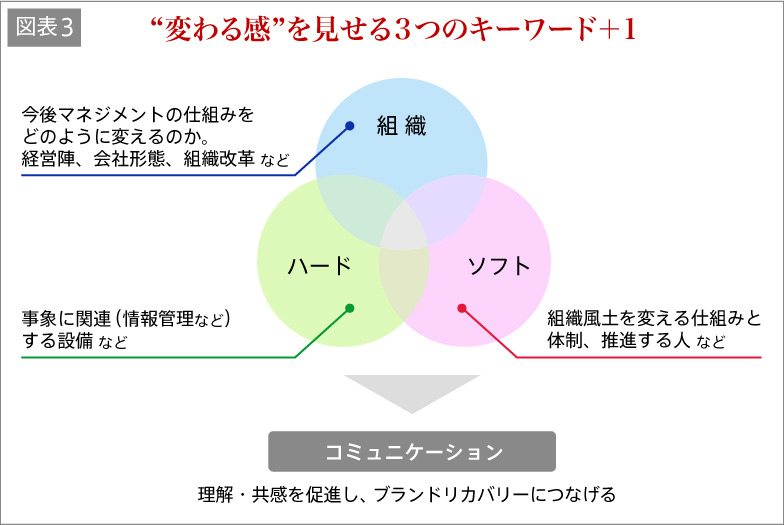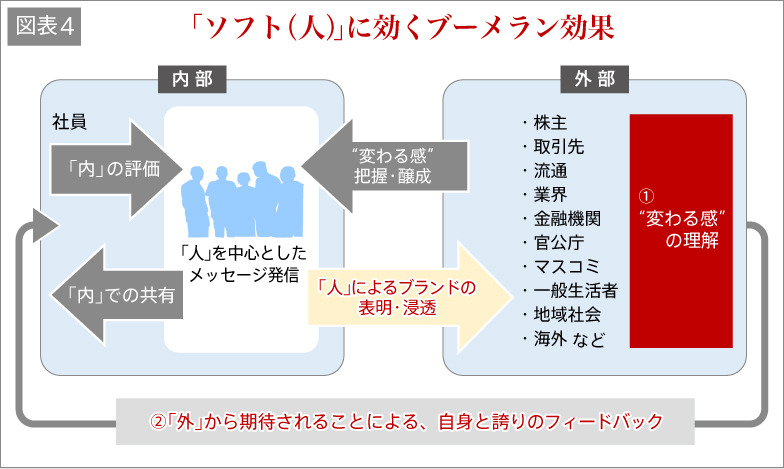This time, we focus on "Brand Recovery (Trust Restoration) PR"—a theme related to "Recurrence Prevention Capability" within the "Crisis Management Pentagon Model" introduced by our Corporate PR Strategy Institute.
■ "Recurrence Prevention Capability" is the Prerequisite for Restoring Trust
Our institute defines recurrence prevention capability as "the organizational capacity to confront crisis experiences and achieve more effective crisis management and restoration of social trust." According to the Crisis Management Capability Survey (March 2015), it is the capability that corporate personnel recognize as the weakest among the "five essential crisis management capabilities for companies."
"Recurrence Prevention Capability" is the fundamental prerequisite for restoring social trust. It is precisely when something occurs that "Public Relations = building better relationships with internal and external stakeholders" is put to the test. How crucial it is to seek opinions from external experts during normal times and to create opportunities for employees to develop a sense of crisis awareness – this is an element that must be recognized not only by PR personnel but by all employees, including top management.
■Delayed Trust Recovery = Major Impact on Branding
Corporate scandals that shatter stakeholder relationships and erode trust seem to occur in rapid succession, perhaps influenced by media reporting styles. Consequently, distrust toward companies only grows...
Looking back, the early 2000s saw a surge in food fraud and recall issues, becoming major societal problems. While various incidents have occurred in recent years too, the stakeholders involved—ranging from shareholders and investors to employees and consumers—are diverse, and these events negatively impact those relationships. It is clear that the longer recovery is delayed, the greater the impact on corporate branding.
Now, as non-financial information like ESG (Environmental, Social, and Governance) factors gain importance alongside financial data in shaping corporate value, how a company responds when something happens will determine its sustainability.
■ 3 Keywords + 1 to Demonstrate "Change"
So, what should be done when a scandal occurs? After emergency response, efforts to restore relationships with stakeholders over the medium to long term impact branding. The key is for everyone, starting with top management and extending to each employee, to continuously communicate the situation of the company/organization changing.
The three keys to demonstrating "a sense of change" are: * "Organization": Management systems and structures * "Hardware": Equipment and systems related to the incident, such as information management * "Software": Systems to change organizational culture
Strengthen each area by clearly defining the facts behind your initiatives. Then, communicate these facts in a balanced manner. By sincerely engaging with stakeholders and gradually gaining their understanding and empathy, you can lead to brand recovery.
From the perspective of rebuilding stakeholder relationships, the most crucial element is "soft = people." How are we changing the corporate culture and employee values? This is the most important element, yet it takes time to effect change and is difficult to quantify tangibly. Precisely because of this, the key point is how effectively we can communicate that the foundational "soft" part – the "people" who carry the organization – is changing.
■ The Boomerang Effect That Works on "Soft (People)"
As trust in the company erodes, the damage to each individual employee within the organization is immense. To sincerely communicate toward restoring trust, it is essential to rebuild the confidence and pride of employees, who are key stakeholders. Continuously conveying people-centered initiatives, the resulting changes, and the thoughts of each individual has an impact both inside and outside the company.
Actively communicating externally is also a crucial element. By sharing the evolving situation alongside the trust-recovery process with external stakeholders, you gradually build their expectations. Feedback this internally to boost employee motivation. This process itself positively impacts brand recovery.
Of course, scandals vary greatly in their circumstances and backgrounds. The nature of the incident, the entities affected, and the extent of the impact will determine the specifics of the trust-restoration efforts, the implementation structure, the time required, and the timing of communications.
It's too late to act only after something happens. Considering the impact your business activities have on society, why not conduct simulations and rethink your "Three Keywords + One" approach to rebuilding trust? This is a crucial perspective we want to share with everyone involved in communication, starting with crisis management personnel.




